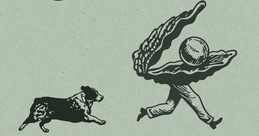
In the Stables at Traverse City Horse Shows
The staff, supplies, and logistics that make the premier equestrian event happen
By Art Bukowski | July 27, 2024
It’s hard to not be impressed by the showmanship, beauty, and strength of the horses that gracefully move around the rings at Traverse City Horse Shows (TCHS).
Perfectly dressed riders atop impeccably groomed horses make for a visual feast week in and week out at the equestrian festival in Acme Township, particularly as they soar over jumps or navigate other obstacles. Thousands of horses, riders, and visitors descend on the 130-acre Flintfields Horse Park from May into October, and the show has developed into one of the premier events of its kind in the nation.
And while much attention is paid to dozens of high-stakes competitions that collectively pay out millions of dollars in prize money, a tremendous amount of work goes on behind the scenes to ensure that the horses are well cared for and ready to compete at the highest level. Northern Express visited TCHS to chat with those in and around the stables to learn more about the work that goes into making one of the region’s most notable events run smoothly.
A Giant Puzzle
First, a bit about how it all works. More than 95 percent of the horses and riders who come to the show throughout the 13-week season come in groups colloquially called “barns.” With names like Meadowview Farm, Three Ships, or North Run, these barns are businesses from around the country that care for horses and train riders. Collectively, these barns are responsible for the more than 5,000 horses that make an appearance at the show throughout the season.
The barns come up with their staff—barn managers, trainers, grooms, etc.—and care for the horses on site while riders participate in various competitions. The number of staff depends on the size of the barn, but it’s not uncommon for dozens of people to be employed by a single large barn.
While feeding, grooming, and otherwise caring for the horses themselves is largely the responsibility of the barns and their staffers, TCHS plays a huge role by providing stalls, food, and supplies—all at a cost to the barns—along with other critical support.
When it comes to food and materials, the numbers are staggering. Throughout the course of the season, TCHS brings in 150,000 bags of soft wood shavings (for bedding in the stalls) from a company in the Upper Peninsula, along with more than 60,000 bales of hay with an average weight of 50 pounds per bale. Add to that about 75 tons of grain as additional feed and countless thousands of gallons of water for drinking and bathing.
And while it’s plenty of work lining up all those supplies, the real challenge is managing the 2,220 stalls gathered under several massive tents spread throughout campus. It’s a wicked combination of Jenga and Tetris for TCHS Competition Manager Tom Blankenship, who is responsible for much of these logistics. Planning begins very early in the year, but adjustments are made in real time all season long as barns and their horses come in and out.
“It’s challenging for sure. It really keeps your brain moving, because you’ve really got to be on top of it,” Blankenship says. “And just when you think you’ve got the puzzle solved, someone will throw a curveball at you—‘Oh, by the way, I’ve got an extra horse I forgot to tell you about’—and you have to scramble again.”
Blankenship and other TCHS staff are also constantly on the move on the grounds making sure any and all obstructions are out of the way and that barns have what they need. “We want to make sure all the horses can get in and out of their bedrooms safely,” he says.
Then there’s all the other tasks and services provided by TCHS, like spray trucks that constantly patrol and use water to keep the dust down and coordination with accredited haulers to remove thousands of tons of manure (much of which ends up being used by local farmers, Blankenship says).
It’s long hours, but Blankenship never really minds the scramble. He’s watched TCHS grow considerably over the years, and he loves talking with folks from across the country—and around the world—day in and day out.
“It’s just amazing, looking at where we were 10 years ago to where we are now,” he said. “People really love being here.”
Inside the Barns
Eva Bernstein and Hannah Eddlemon work for Marketmoor, a barn based in Ocala, Florida. The Marketmoor team brought 19 horses to TCHS for competition this year, and much of their staff works long days to keep the horses in the best shape possible. Bernstein is a manager and Eddlemon is a working student (a common position in the industry), and both get their hands dirty with any and all barn tasks throughout the day.
When it comes to managing such an operation, even things that seem relatively simple often require a bit more nuance. Feeding isn’t just dumping food and walking away, for example. It can change depending on the animal and situation, and the right amount is critical to health and competition performance.
“You know by doing it enough, based on the size of the horse and how easy they are to keep their weight on and their muscle [in good shape],” Eddlemon says. “Then they’re all on their specific supplements that are tuned to their needs.”
The stalls need to be shoveled, of course. Manure comes out, fresh shavings go in. It’s hard work, with each horse capable of producing more than 30 pounds of manure and two gallons of urine a day.
“Since these are show horses, we want to keep them clean, and part of that is keeping the stalls as clean as possible,” Bernstein says. “The stalls get done a lot, they always have water in front of them, they always have hay—we take the best care of them that we can.”
The horses also have significant exercise needs, and that’s where lunging comes in. This involves putting the horse on a long rope and letting them more or less run in circles.
“There’s a methodical way to do it for training, but the purpose of it is just to let them get their energy out while we’re not on them,” Bernstein says. “So if they want to buck or something, they can do it without a rider.”
Sometimes they’ll ride a horse over to the rings so it can get a good look ahead of time and are less likely to spook at their surroundings. Then there’s lessons for clients (many horse owners come to the show), sweeping the aisles, washing the horses…the list goes on.
Because it involves living animals, work can come around the clock. And even aside from the occasional call in the middle of the night due to a temperamental horse, the baseline hours are already extremely taxing.
“We work regular 12-hour days, and physically, it’s a very demanding job. It’s long hours, and you’re also on your feet all day, and you’re moving all day,” Bernstein says. “You have to love the sport, you have to love the animals, you have to love every part of it to want to do this every day.”
But all in all, the hard work behind the scenes is deeply enjoyable for Bernstein and Eddlemon, who know that developing a good connection with horses will benefit them across their careers.
“We all want to progress in our riding careers, and the best way to do that is to understand the animals, and the best way to do that is by spending time with them in the barn,” Bernstein says. “It’s very rewarding to see the horses in their stalls and in the barn versus in the ring.”
Trending

Our Top Stories of 2025
Each year, we look back at the stories we’ve shared over the last 12 months and pull together the ones that got the mo… Read More >>
A Solo Rattler
Frontman of folk-rock band Michigan Rattlers Graham Young brings his solo performance to Great Lakes Center for the Arts in … Read More >>
GTB Starting the Year with Tradition
The Grand Traverse Band of Ottawa and Chippewa Indians hosts the Kchi Wiikwedong Anishinaabek Maawnjidowin Round Dance on Ja… Read More >>


